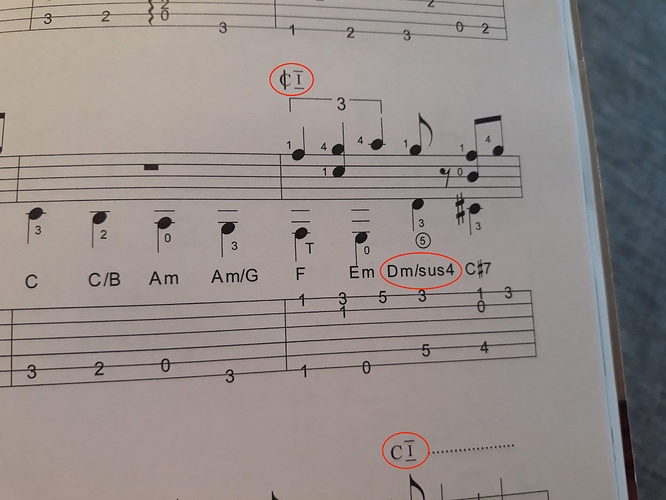I’ve been going through my copy of Tommy Emmanuel - Note For Note and I noticed two musical symbols I’ve never encountered before in the transcription of Blue Moon. In the back of the book there’s a section on notation and tabulate explanation, but clarifications on these symbols are missing.
One is a Dm/sus4 chord. I’m plenty familiar with slash chords but I’ve never seen one written like this. Does anyone which notes are part of this chord?
The other one is a pair of C-like symbols – looking like cut and common time respectively – combined with a roman numeral or something similar. Any idea what this implies?







 A big reason theory and these conventions exist is so we can all talk about things and understand each other. If you call it a G7#5 even though it may function as a G7b13, I know what notes you want and I can play them
A big reason theory and these conventions exist is so we can all talk about things and understand each other. If you call it a G7#5 even though it may function as a G7b13, I know what notes you want and I can play them 